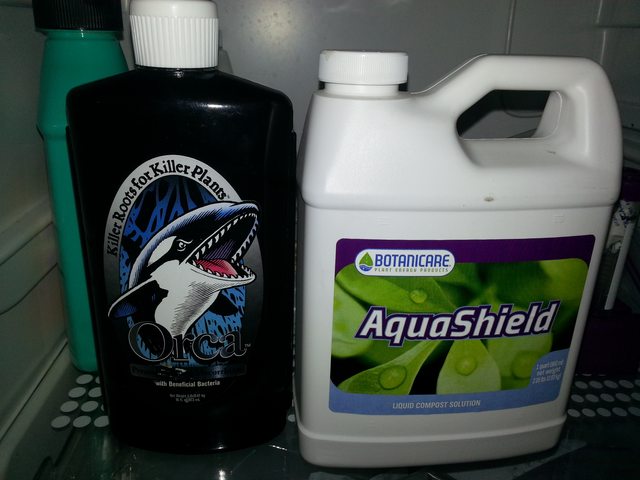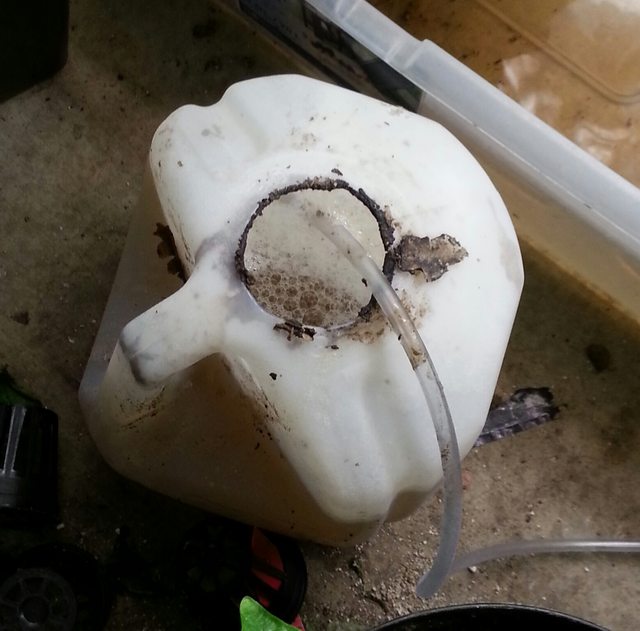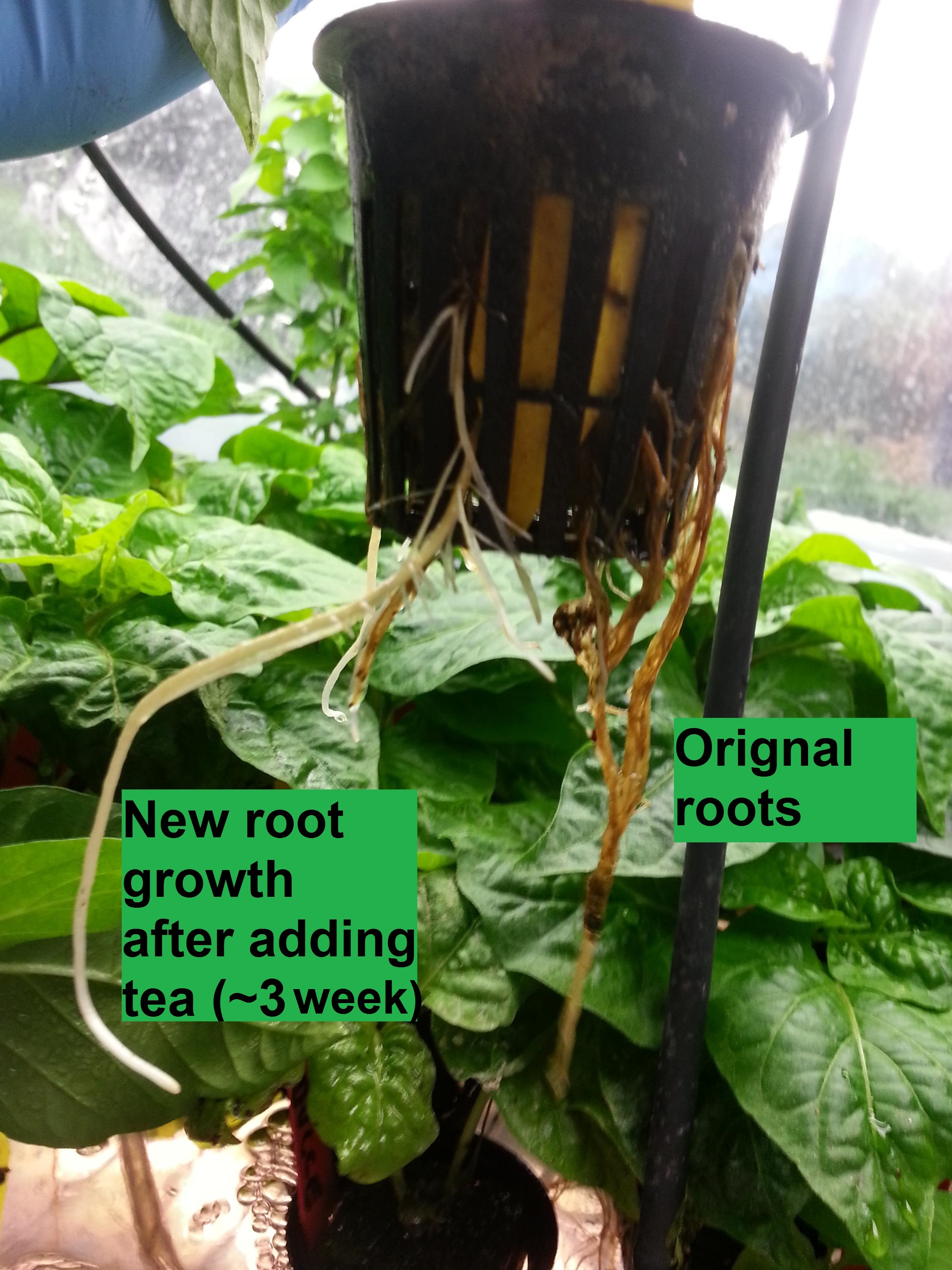Hey fellas,
I have had such great results with my tea recipe over the past few seasons that I wanted to share it. I have used this tea in soil and hydro, but you can't see the results in soil so all example pics are from hydro.
There is another thread (the pinned one) that talks all about compost tea. I am posting this one so people have a specific recipe along with pictures of the results.
The idea is that you add a relatively small quantity of your beneficial microbes and culture them through the so-called log phase of growth which is 'pay me more because I make up sciencey words' speak for you end up with a sh*t load more than you started with (exponential growth type thing). Some of the products can be expensive and some of the people here have ridiculous quantities of plants (Brain Strain Pepper Head, I'm looking at you, for one) so even the cheap stuff adds up. By using teas, you can stretch your microbe products by literally 1000s of times. I used to do cell culture as part of my job and routinely multiplied cells by BILLIONS of times from what I started with. Quite easily I might add.
Basics requirements of a tea are (as explained in the pinned thread) as follows:
Food (for microbes, not plants)
Water
Air
Microbes
Recipe and process
There are many ways to do it, but this is what I personally have found to be the most effective and simplest. Use common sense to sub things out like the milk jug for example.
What you'll need:
1. A gallon milk jug
2. An air pump and air stone (can be small)
3. Flour
4. Beef Bouillon (preferably low/free of sodium but that's not critical)
5. Sugar
6. The following products:
Orca
Aquashield
Earthworm Castings

Directions:
1. Dissolve 2 bouillon cubes, roughly 1/4 cup sugar, and roughly 1/4 cup flour in hot water (can be separately) and add it to the jug. Fill the jug up to 3/4 full with fresh tap water (don't age it).
2. Add "some" of the Orca and Aquashield - Just go with double whatever the labels say and you'll be fine. Give it a good stir, drop in the air stone and set it somewhere reasonably dark (preferably 70-85F). Let her bubble for 24-48 hours.
3. After the first 24-48 hrs, add a small handful of earthwork castings and let her bubble for at least another 24 hours. (If you put it in a coffee filter and close it with a rubber band it is cleaner, but it's not necessary)
DONE! Ready to use.
I highly recommend starting with small amounts around 1/4 cup of tea per gallon of water since he growth rates depend on so many factors. USE FAR MORE DILUTED TEA IF ITS ON SEEDLINGS. You can increase this as long as you don't see it harm the plant, but using over a cup per gallon of water is probably going to be overkill.
After you have used some, you can top off the jug with water and let it keep bubbling. Just remember, it will get stronger. I've let my teas go for more than a month, but I would recommend you start fresh every two weeks or so.
Alternatively, although I haven't done this, instead of topping off and continuing the culture, you could store it in the fridge for about 2 weeks.
DO NOT LEAVE TEA AT ROOM TEMP WITHOUT AERATING. Over night is fine, but if several days pass without air, toss it and start over. Bad guys could start to grow.

It ain't pretty but it works!
The results:

You can't argue with that...
I have never had a single disease problem while using this tea.
Hope this helps others as much as it has me!
I have had such great results with my tea recipe over the past few seasons that I wanted to share it. I have used this tea in soil and hydro, but you can't see the results in soil so all example pics are from hydro.
There is another thread (the pinned one) that talks all about compost tea. I am posting this one so people have a specific recipe along with pictures of the results.
The idea is that you add a relatively small quantity of your beneficial microbes and culture them through the so-called log phase of growth which is 'pay me more because I make up sciencey words' speak for you end up with a sh*t load more than you started with (exponential growth type thing). Some of the products can be expensive and some of the people here have ridiculous quantities of plants (Brain Strain Pepper Head, I'm looking at you, for one) so even the cheap stuff adds up. By using teas, you can stretch your microbe products by literally 1000s of times. I used to do cell culture as part of my job and routinely multiplied cells by BILLIONS of times from what I started with. Quite easily I might add.
Basics requirements of a tea are (as explained in the pinned thread) as follows:
Food (for microbes, not plants)
Water
Air
Microbes
Recipe and process
There are many ways to do it, but this is what I personally have found to be the most effective and simplest. Use common sense to sub things out like the milk jug for example.
What you'll need:
1. A gallon milk jug
2. An air pump and air stone (can be small)
3. Flour
4. Beef Bouillon (preferably low/free of sodium but that's not critical)
5. Sugar
6. The following products:
Orca
Aquashield
Earthworm Castings

Directions:
1. Dissolve 2 bouillon cubes, roughly 1/4 cup sugar, and roughly 1/4 cup flour in hot water (can be separately) and add it to the jug. Fill the jug up to 3/4 full with fresh tap water (don't age it).
2. Add "some" of the Orca and Aquashield - Just go with double whatever the labels say and you'll be fine. Give it a good stir, drop in the air stone and set it somewhere reasonably dark (preferably 70-85F). Let her bubble for 24-48 hours.
3. After the first 24-48 hrs, add a small handful of earthwork castings and let her bubble for at least another 24 hours. (If you put it in a coffee filter and close it with a rubber band it is cleaner, but it's not necessary)
DONE! Ready to use.
I highly recommend starting with small amounts around 1/4 cup of tea per gallon of water since he growth rates depend on so many factors. USE FAR MORE DILUTED TEA IF ITS ON SEEDLINGS. You can increase this as long as you don't see it harm the plant, but using over a cup per gallon of water is probably going to be overkill.
After you have used some, you can top off the jug with water and let it keep bubbling. Just remember, it will get stronger. I've let my teas go for more than a month, but I would recommend you start fresh every two weeks or so.
Alternatively, although I haven't done this, instead of topping off and continuing the culture, you could store it in the fridge for about 2 weeks.
DO NOT LEAVE TEA AT ROOM TEMP WITHOUT AERATING. Over night is fine, but if several days pass without air, toss it and start over. Bad guys could start to grow.

It ain't pretty but it works!
The results:

You can't argue with that...
I have never had a single disease problem while using this tea.
Hope this helps others as much as it has me!
